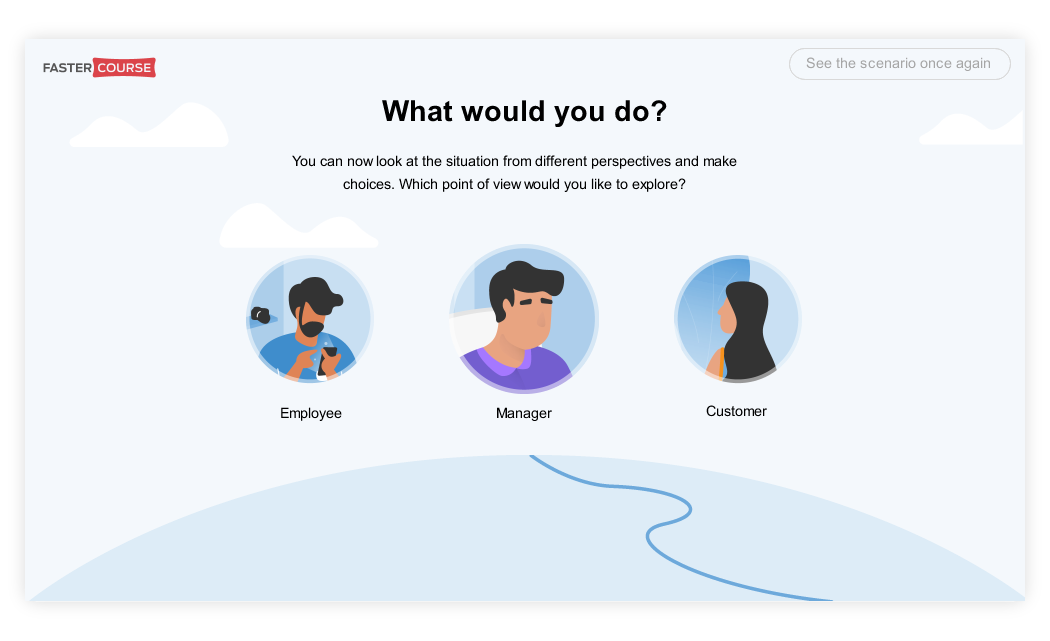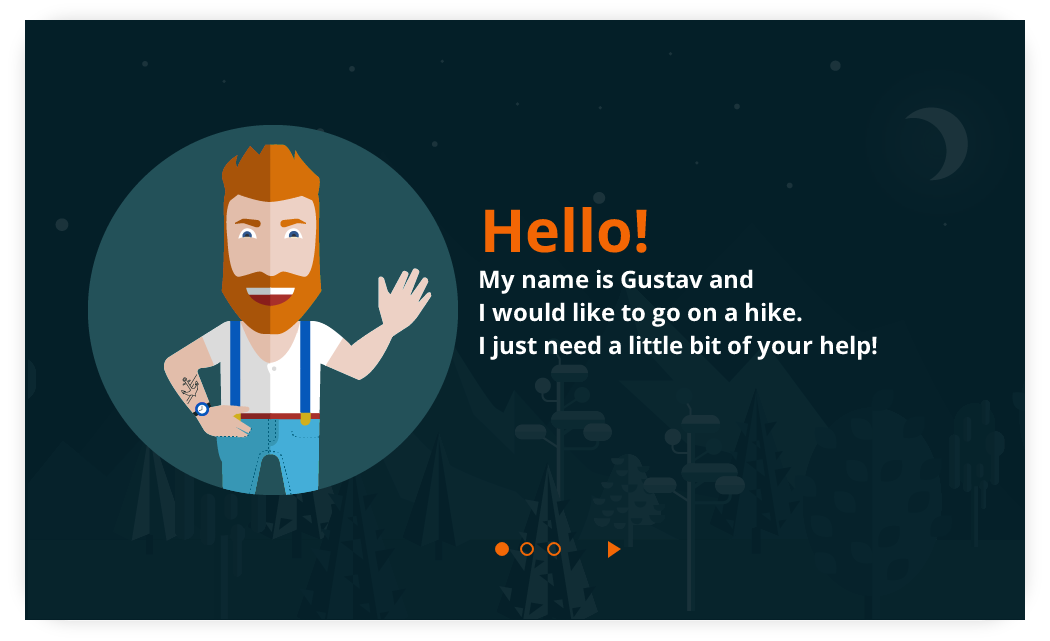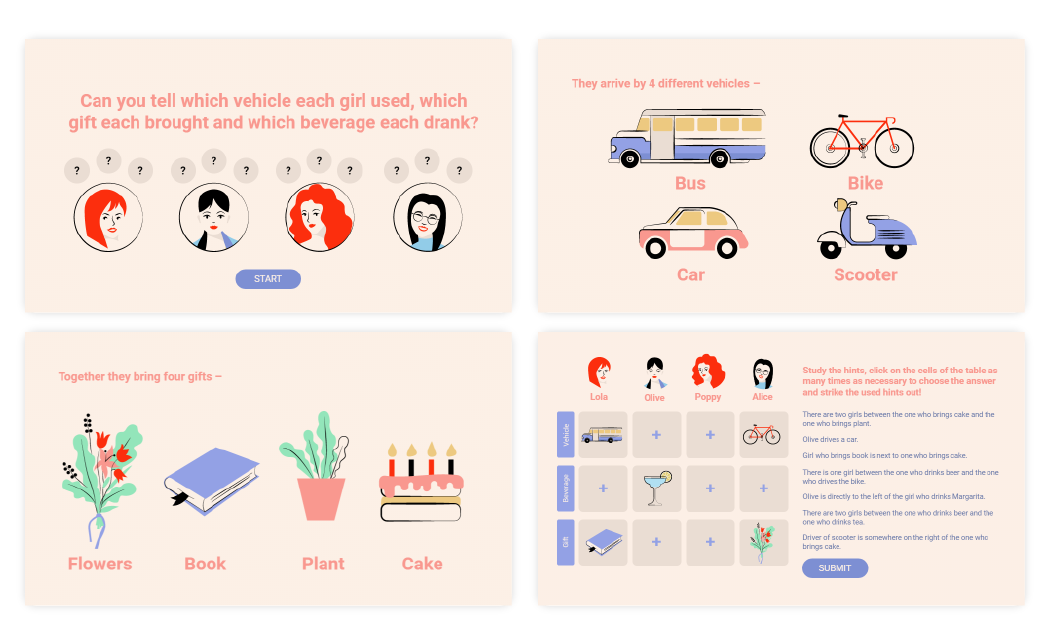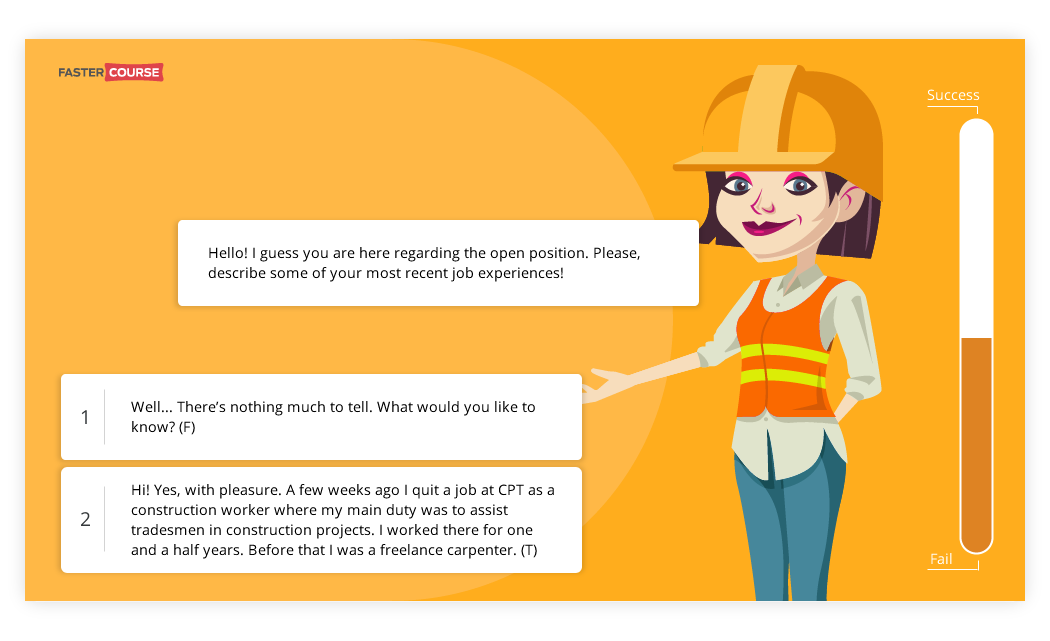Sometimes when creating an elearning course you may get so overwhelmed about all that awesome information you are going to share that you don’t even bother much about the instructional design. Or, other way around, you already presume that reading the same fire regulations every year most probably won’t be much fun. Whatever the case, there is a way how to enliven a different range of courses: adding an interactive character, or, in other words, an avatar, actor, learning agent, or pedagogical character. You can implement one or more into your elearning course by using photo images, illustrations, audio, or video.
Here are some advantages a character might add to your elearning course:
1. Emotional connection
E-learning courses may sometimes be impersonal, and adding a character can help users to feel emotionally connected to the content because much of what people remember from a learning experience are the feelings of the message rather than plenty of small facts. Just remember that simply showing the character’s image is not enough to create the connection. Learners connect more with the course content when the story and its characters are developed effectively. You can also add various characters and let the user choose the one they find the most likable and can identify with, this way personalizing the course for them. The personalization becomes very important, especially when working with global audiences because cultural differences when a user is not able to identify with the character, can make the training less efficient.
EXAMPLE: In this branching course you can choose different paths based on the character you choose after you have been informed about the situation you need to deal with. You can also start the elearning course with an option to choose an avatar that will guide the learner through the course as it is in our Mission Bird template.

2. Story
By adding a character to the elearning course we are also adding a story of a character to the course. It’s essential to use specific instructional and visual design guidelines that define the story of the implemented character. Characters and the stories built around them make learning more appealing because our brains are wired for stories. When information is transferred through a story, it is perceived in a unique way. Stories help us process and remember information, which makes learning more efficient – up to 70% of what we learn is consumed through storytelling.
EXAMPLE: In this case, we created a character Gustav that needs help from the learner to find all the necessary things for the upcoming hike. We created a story around the game, so the learner would be willing to do the test to help an imaginary character. In this case, you need to answer all the questions correctly to get the necessary items for the hike. You can see the whole game here.

3. Context of data
Many people perceive data as meaningless numbers unless the data is connected to something important in their experience – for example, other people and relationships with them, as people are more attracted to other people than to anything else. That explains why people tend to remember information presented in stories better than information presented as data only. In order to succeed with data perception, we recommend placing data in the context of a story.
EXAMPLE: This is an Einsteins Riddle game where you have a lot of information that you need to connect in a logical way. We could have just listed that there were 4 girls, 4 vehicles, 4 drinks and so on, but we wanted to give the learner the feel of a story, so we created a little animation at the beginning to show all aspects of the game, so it would be easier to find the correct answer.

4. Human touch by adding audio
Audio is an important part of creating both – the story and the character. Without the sound characters may not be as appropriate or effective as they could, and the voice is that special detail adding a human touch to the whole elearning course. Sometimes you can even use audio for emphasis without the character being used on the screen so that the user maintains his or her connection with the character and its story.
EXAMPLE: Greet the character at the beginning of the course but don’t use it in every slide. Instead, use the voice in some slides and the learner will feel like the character is talking to him even though he is not visible and that will create a personalized experience for the learner.

5. Motivation
Can a character turn not so good elearning course into a great one? Not really. But it can be a very helpful tool to help your user process the provided information, especially for a user who may not be motivated to learn what you wish to teach. (Remember the fire regulations?) If the user is not motivated, the designer needs to add something extra to create the interest. And a character has such power, as the user gets attracted for reasons that have more to do with emotions than with anything else.
EXAMPLE: This Construction branching template would be plain and boring if it weren’t for the character. She gives different feedback to every answer option and changes facial expressions making the experience for the learner as real as posisble.

At the end I would like you to offer a small brief of learning benefits added by a character, described by Byron Reeves of Stanford University:
- Increases the amount your users learn and remember
- Motivates your users to keep interacting with the program
- Gives your users a sense of continuity between lessons or sessions
- Increases your user’s positive feelings about the course
- Provides your user with a sense of personalized attention
- Increases your user’s trust in the information presented
- Makes your program less intimidating and easier to navigate
Explore our illustrated characters
Explore our illustrated characters and try adding them to your elearning course to see how easily you can turn your course into a personalized journey for your learner. And the good news is – we have more than 30 illustrated characters that want to meet you! Click the button below and see all of our characters!
References:
Reeves, Byron. The Benefits of Interactive Online Characters. The Center for the Study of Language and Information. Stanford University. 2004.


Comments